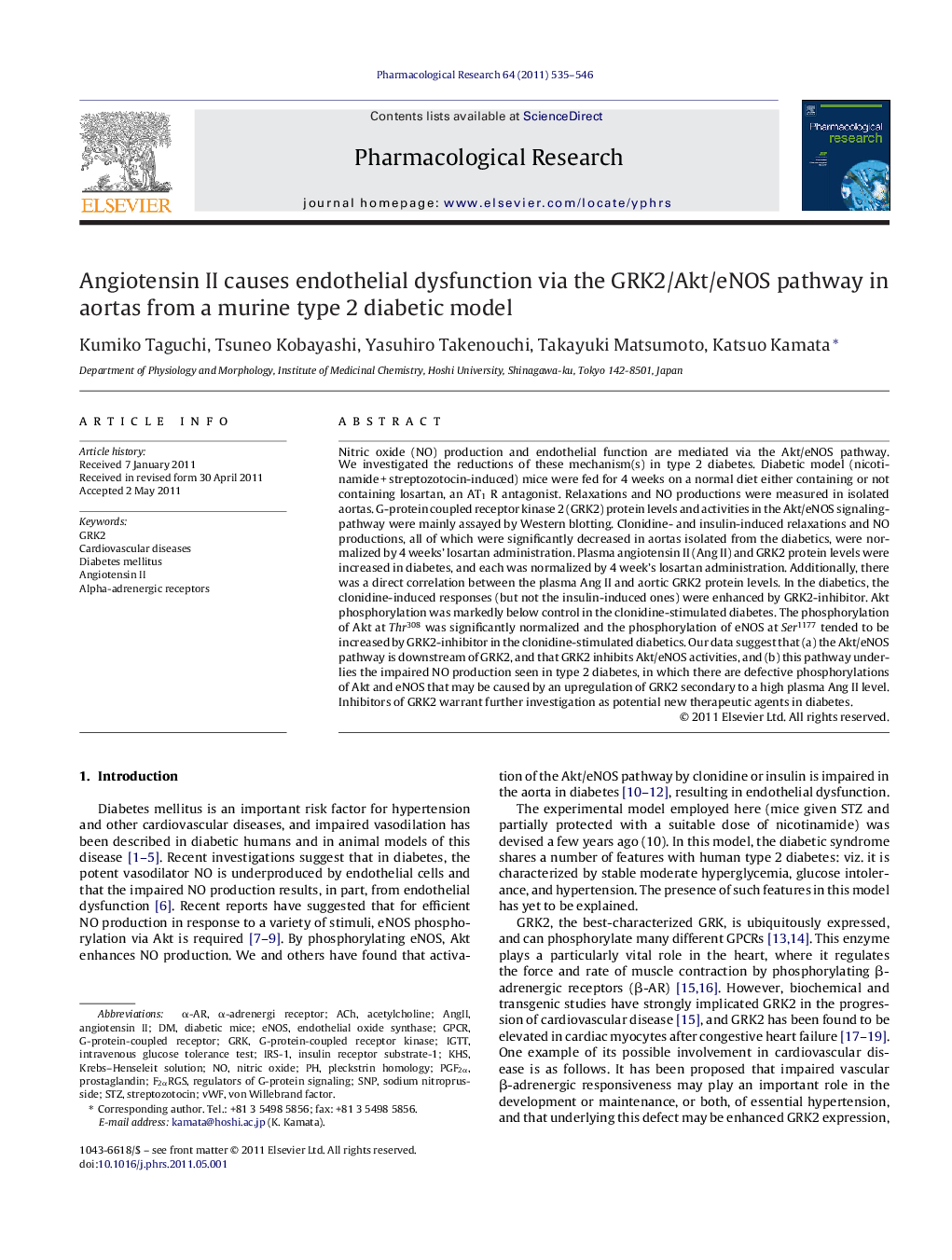| Article ID | Journal | Published Year | Pages | File Type |
|---|---|---|---|---|
| 5843871 | Pharmacological Research | 2011 | 12 Pages |
Abstract
Nitric oxide (NO) production and endothelial function are mediated via the Akt/eNOS pathway. We investigated the reductions of these mechanism(s) in type 2 diabetes. Diabetic model (nicotinamide + streptozotocin-induced) mice were fed for 4 weeks on a normal diet either containing or not containing losartan, an AT1 R antagonist. Relaxations and NO productions were measured in isolated aortas. G-protein coupled receptor kinase 2 (GRK2) protein levels and activities in the Akt/eNOS signaling-pathway were mainly assayed by Western blotting. Clonidine- and insulin-induced relaxations and NO productions, all of which were significantly decreased in aortas isolated from the diabetics, were normalized by 4 weeks' losartan administration. Plasma angiotensin II (Ang II) and GRK2 protein levels were increased in diabetes, and each was normalized by 4 week's losartan administration. Additionally, there was a direct correlation between the plasma Ang II and aortic GRK2 protein levels. In the diabetics, the clonidine-induced responses (but not the insulin-induced ones) were enhanced by GRK2-inhibitor. Akt phosphorylation was markedly below control in the clonidine-stimulated diabetes. The phosphorylation of Akt at Thr308 was significantly normalized and the phosphorylation of eNOS at Ser1177 tended to be increased by GRK2-inhibitor in the clonidine-stimulated diabetics. Our data suggest that (a) the Akt/eNOS pathway is downstream of GRK2, and that GRK2 inhibits Akt/eNOS activities, and (b) this pathway underlies the impaired NO production seen in type 2 diabetes, in which there are defective phosphorylations of Akt and eNOS that may be caused by an upregulation of GRK2 secondary to a high plasma Ang II level. Inhibitors of GRK2 warrant further investigation as potential new therapeutic agents in diabetes.
Keywords
ANGIIIGTTregulators of G-protein signalingKHsPGF2αGRK2GRKKrebs–Henseleit solutionIRS-1α-ARSTZeNOSvWFGPCRG-protein-coupled receptorG-protein-coupled receptor kinaseintravenous glucose tolerance testAngiotensin IIAChstreptozotocinAcetylcholineinsulin receptor substrate-1Cardiovascular diseasesDiabetes mellitusVon Willebrand factorDiabetic micesodium nitroprussideNitric oxidePleckstrin HomologyprostaglandinSNPAlpha-adrenergic receptors
Related Topics
Health Sciences
Pharmacology, Toxicology and Pharmaceutical Science
Pharmacology
Authors
Kumiko Taguchi, Tsuneo Kobayashi, Yasuhiro Takenouchi, Takayuki Matsumoto, Katsuo Kamata,
